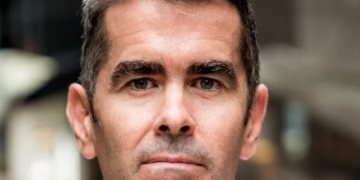8 JULY 2019 / GENEVA – On the occasion of the Second Global Rehabilitation 2030 Meeting, WHO has released a new tool, namely Rehabilitation in health systems: guide for action. This resource aims to help countries improve the availability, accessibility, affordability and quality of rehabilitation services, needed to help people overcome difficulties in their everyday lives. Rehabilitation – a set of interventions to improve thinking, seeing, hearing, communicating, moving and other functions – is a key strategy for achieving Sustainable Development Goal 3 to “ensure healthy lives and promote well-being for all at all ages”.
Worldwide, there is an ever-increasing need for rehabilitation which is largely unmet, particularly in low- and middle-income countries. This is due primarily to a rise in the number of older people and people living with noncommunicable diseases. While more people are living longer, they often confront limitations in their everyday functioning. Today, 15% of all years lived with disability are caused by illnesses and injuries that are associated with severe levels of disability. For many people, access to rehabilitation is essential for them to remain independent and fulfill meaningful life roles.
“Rehabilitation is key to the achievement of all three of WHO’s ambitious targets: one billion more people with universal health coverage; one billion more people better protected from health emergencies; and one billion more lives made healthier” notes Dr Zsuzsanna Jakab, WHO Deputy Director-General. “The need for rehabilitation is greater today than it ever has been. Much more needs to be done to advance the rehabilitation agenda, and it will require the work and commitment of all of us.”
To address this global unmet need, WHO initiated “Rehabilitation 2030: Call for Action”. The initiative calls for coordinated action on several fronts including improving rehabilitation management and investment, building high-quality rehabilitation workforce and services, and enhancing data collection on rehabilitation. Since the initial call for action in 2017, WHO has supported more than 20 countries in strengthening their health systems to better provide rehabilitation.
For many low- and middle- income countries, there is a lack of trained professionals to provide rehabilitation, with less than 10 skilled practitioners for every 1 million people. In addition there are high out-of-pocket expenses; challenges accessing rehabilitation services outside of urban areas; and a shortage of assistive devices such as wheelchairs, eyeglasses and hearing aids. The end result is that less than 50% of people who require rehabilitation services receive them.
“Disparities continue to exist in the provision of rehabilitations services across countries” notes Dr Etienne Krug, Director of the WHO Department for the Management of Noncommunicable Diseases, Disability and Violence and Injury Prevention. “The Guide for Action will help countries to identify their own priorities and develop a strategic plan that allows them to increase the reach, quality and effectiveness of rehabilitation services.”
With the generous support of the United States Agency for International Development, the Guide for Action, which predominately targets governments, provides practical guidance for countries to develop a comprehensive, coherent and beneficial strategic plan. It does so by leading them through a four-phase process of: situation assessment; strategic planning; development of monitoring, evaluation and review processes; and implementation of the strategic plan.
The Guide for Action is being launched at the Second Global Rehabilitation 2030 Meeting, attended by over 250 participants, including representatives of Member States and civil society, rehabilitation experts and academics, with the objective of taking stock of progress made in countries and agreeing on concrete actions to move the global rehabilitation agenda forward. The Guide for Action will be a key resource to support Member States to accelerate action at country level








































